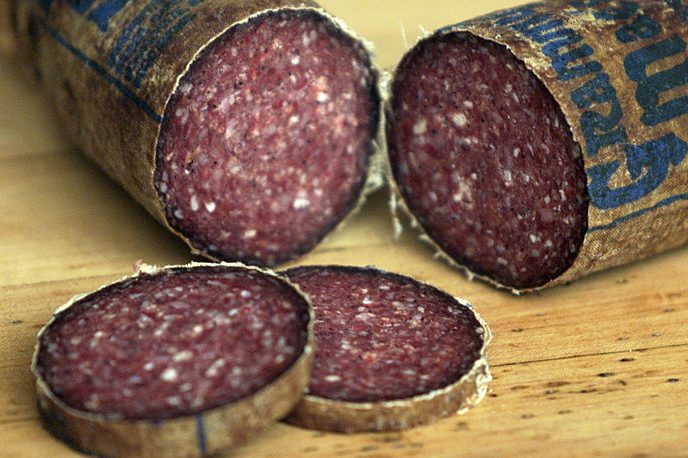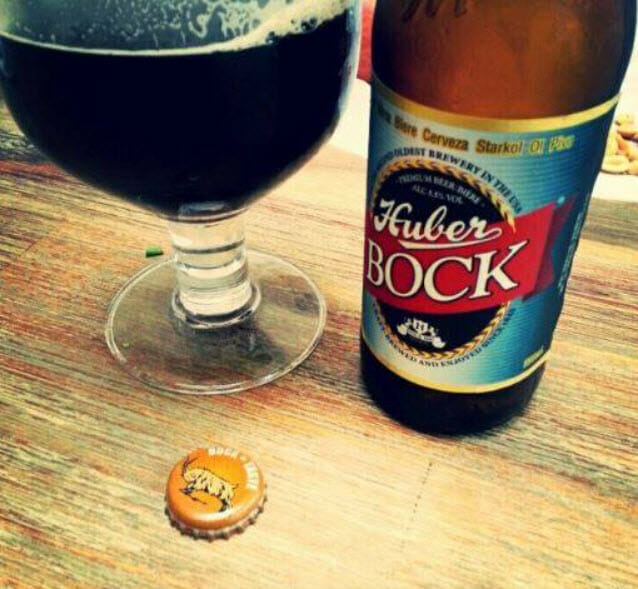What is summer sausage made of? Why is it called summer sausage? It’s not just for summer, but it goes well with a cold drink. Plus, learn what kind of cheese goes with summer sausage.
Some of the best snacks in the world are summer sausages, but you can get them all year, not just in the summer. There is no better time of the year than now to enjoy this tasty treat with any meal or gathering. So what’s up with the seasonal name?.
For many, the smoky, tangy flavor of summer sausage elicits instant cravings. Its compact size makes it perfect for everything from hearty snacks to sandwich slices. But have you ever wondered – why exactly is this cured sausage called summer sausage?
It may seem counterintuitive to eat a heavy, spiced meat during hot summer months. Ready to solve the mystery? Let’s dive into the fascinating history behind how summer sausage earned its sunny name.
Calling All Charcuterie Enthusiasts!
To get to the bottom of why it’s dubbed summer sausage we first need to understand the origins of this cured meat. Sausage making dates back thousands of years as a way to preserve meat without refrigeration. The ancient Chinese produced early versions of lap cheong while Romans mastered various sausage recipes.
The term “sausage” comes from the Latin word “salsus” meaning salted or preserved. Sausage making flourished across Europe throughout the Middle Ages. Germany emerged as a major producer of bratwurst, frankfurters, and other smoked sausages.
Summer sausage follows in this long charcuterie tradition. It originated as a way to preserve pork during warmer months when spoilage risk was highest. The curing process enabled the sausage to keep without refrigeration.
How Traditional Curing Led to “Summer” Sausage
Before modern preservation methods, making cured meats was essential for surviving long winters. Come summer, warmer temperatures increased the chance meat would quickly spoil.
Farmers had to get creative to avoid waste and supply their families with pork year-round. As temperatures climbed, they began producing sausages utilizing salt, smoke, and saltpeter to preserve the meat. These “summer sausages” could last unrefrigerated for weeks.
The name distinguished this specialty cured sausage from others like fresh bratwurst that needed immediate eating or cold storage. Summer sausage was the perfect portable protein to last through sunny months when access to fresh meat was limited.
Why the Summer Sausage Method Works
Traditional summer sausage relies on a specific curing technique that inhibits spoilage:
-
Salting – Heavy salt content pulls moisture out of meat to prevent bacterial growth.
-
Smoking – Smoking infuses preserving compounds while forming an outer pellicle.
-
Fermenting – Cultures produce acid to lower pH and control microbial growth.
-
Air-Drying – Sausages are dried at cool temperatures to further dehydrate the meat
This meticulous process transforms fresh pork into shelf-stable summer sausage that can hold up even at room temperature.
Keeping It Old School: Traditional Production
Today many mass-produced summer sausages utilize modern shortcuts like chemicals and cold smoking. But traditional artisanal production remains unchanged for centuries:
-
Meat is carefully selected, often using wild game like venison or bison.
-
A curing salt blend is massaged thoroughly into the ground meat.
-
The sausage mixture ferments at cool temperatures to develop tang.
-
Natural casings are stuffed by hand then sausages are air-dried.
-
Sausages are cold-smoked using traditional smokehouses.
-
The sausages age further to intensify flavor.
-
Finally, they are hand-cut and vacuum-sealed.
This slow old-world approach results in superb flavor and texture.
Common Characteristics of Summer Sausage
From its distinctive tang to visual cues, summer sausage has some typical traits:
-
Dry and firm – Very little moisture remains after curing; sliced texture is dense.
-
Tangy flavor – Fermentation produces acidic notes mingling with smokiness.
-
Deep mahogany color – Slow smoking imparts a distinctive reddish-brown hue.
-
Peppery snap – Addition of bold seasonings like cracked peppercorns.
-
Small diameter – Usually around 2 inches wide to enable thorough drying.
-
No refrigeration needed – Proper curing means it keeps at room temperature after opening.
These hallmarks make summer sausage both shelf-stable and full of flavor.
Popular Varieties to Savor
While traditional pork summer sausage is the most ubiquitous, many delicious varieties have emerged:
-
Beef summer sausage – Made from cured ground beef.
-
Cajun – Infused with lively Cajun spices.
-
Cheese summer sausage – Bits of cheddar or Monterey jack mixed in.
-
Jalapeño – Peppers provide spicy kick.
-
Hunter’s sausage – Game meat like venison, bison, or boar.
-
Smoked summer sausage – Cold-smoked instead of just dried.
-
Turkey summer sausage – A leaner alternative using ground turkey.
The options let you choose anything from mild deli-style to zesty Cajun depending on your tastes.
Enjoying Summer Sausage All Year Round
Summer sausage makes a tasty addition to meals and snacks anytime – not just during sunny months! Here are delicious ways to savor it:
-
Chilled summer sausage slices with crackers, cheese, and fruit for an appetizer board
-
Diced and added to omelets or breakfast tacos
-
Sliced thin on sandwiches and paninis
-
Chopped over salads for protein and smoky flavor
-
Cubed in pastas, soups, and stews
-
Melted into dips like beer cheese or queso
-
Enjoyed on a charcuterie platter with mustards, pickles and olives
Thanks to its versatility and long shelf life, summer sausage can be readily enjoyed year-round!
The Gift That Keeps on Giving
Next time you grab a stick of summer sausage, appreciate the centuries of preserving knowledge that allow this flavorful sausage to thrive. Its distinctive tang and smokiness stem directly from old-world curing methods born of necessity to avoid waste in the heat of summer.
Though we may no longer depend on it for survival, summer sausage remains a charcuterie standout and a delicious way to showcase expert artisanal craft. Its name acts as a reminder of mankind’s ingenuity when it comes to transforming fresh meat into cured meats. Each tasty slice connects us to generations past and timeless culinary traditions.

Does summer sausage need to be refrigerated?
Yes. Before we get too carried away, “without refrigeration” is a relative term. We are talking about meat, after all. While there are some dry sausages (pepperoni, saucisson sec, etc. Some summer sausages are shelf-stable, but most of it is semi-dry and needs to be kept in the fridge if you want to keep it for a while.
Even though summer sausage can be served at room temperature, it lasts up to one month longer if you keep it in the fridge. It is a perishable food item and requires proper storage to maintain its freshness and prevent bacterial growth. For safety reasons and to make it last longer, it should be kept in cool places when not in use.
What is the Best Cheese to go with Summer Sausage?
Frankly, we’re not as concerned with storing summer sausage as we are with eating it. Once it’s opened, it’s not lasting a month in the refrigerator, or anywhere. What goes best with summer sausage? We’ll start with cheese.
When selecting a cheese to go with summer sausage, let’s look at the properties of the sausage. It’s semi-dry (semi-hard). It’s salty, smoky, and tangy from the lactic acid fermentation. What you’re looking for in a cheese is contrast. Choose a cheese that’s creamier in nature, with enough fat to balance the acidity. Smooth, semi-soft cheeses like Havarti, butterkäse, or Muenster go well with sausage because they have a neutral flavor that lets the spices stand out. A sharp Cheddar (any Cheddar will do) or Swiss is also a great match. The nutty notes in these cheeses go well with the smoke and acidity of the sausage.
Science aside, the best cheese to pair with summer sausage is subjective and depends on personal preferences. However, other popular choices include Monterey Jack, pepper jack, provolone, and Gouda. It’s a good idea to experiment and find the combination that you enjoy the most.

